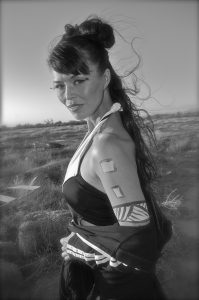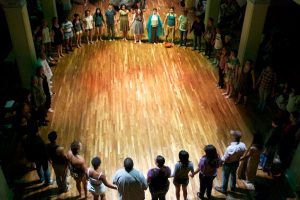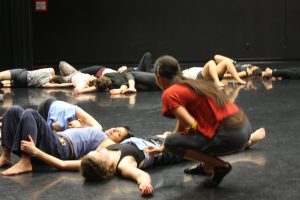STUDENT EXAMPLE: Native American environmental art, dance, and choreography
The work of Rulan Tangen centers around using dance to express a Native worldview and to inspire younger generations. Tangen has gone to many colleges and Native communities to teach people the art of dance in a way that will allow them to experience Native culture. During her career, she created a group called Dancing Earth that aims to bring awareness to Native culture while inspiring young artists through their dance performances.
Rulan Tangen’s work mainly focuses on expressing Native culture and empowering the next generation. She has dedicated her life to teaching people how to dance in ways that mimic healing rituals of Native tribes. She values the way that movement can bring an energetic connection between people. Her Dancing Earth dance group is an inter-tribe group that enjoys displaying their Native culture to people through their performances.



Rulan Tangen’s work encourages people to experience a new and different culture by allowing them to not only see but participate in Native American dance. She has provided new opportunities to young Native artists by creating a dance group dedicated to them. Native Americans have faced many issues regarding their culture in the past. Colonialism was only the beginning, as throughout American history, Natives have been incentivized not only to leave their reserves but also their culture behind. Most of the modern world finds Native customs, such as the belief in the spirit of nature and healing rituals, to be unscientific and even silly. Rulan Tangen has shown the world that Native American culture has a role in the modern world. She has demonstrated that expressing Native culture can not only be fun, but meaningful through her dance lessons.
Her work has inspired young artists in that they can keep their cultural identity intact and use it as inspiration for their work. She has demonstrated that artists can create their own place in the world through her creation of Dancing Earth. Rulan Tangen has dedicated her life to dance. She wants to let others know that they can follow their dreams and express their cultural identity at the same time. Her work is proof of that. At the same time, her work has not finished as she still performs with the goal of inspiring even more of the new generation.

